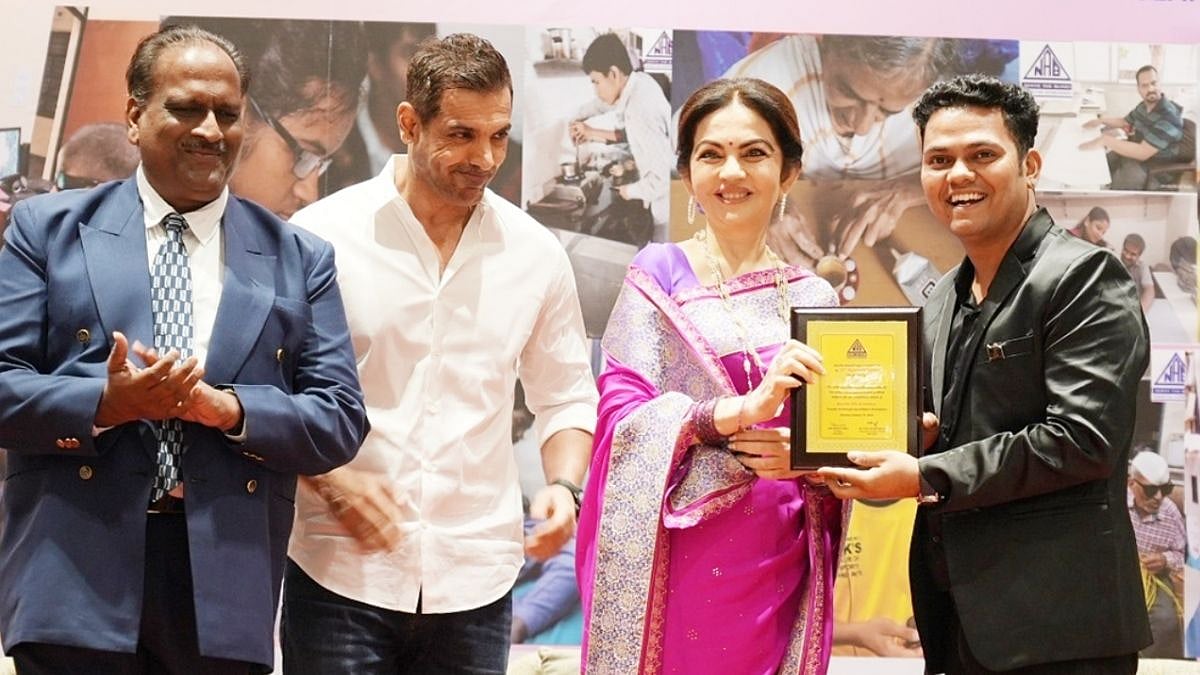The Economics Nobel prize this year went to a single individual, Professor Claudia Goldin of Harvard University. She is the third woman in history to have won this award and the first to be honoured independently. Being the first woman to get the Economics Nobel as a single prize winner is something very special. The Nobel citation, describing her work over five decades, says that the prize is “for having advanced our understanding of women’s labour market outcomes”. Some of her insightful and original contributions have become common knowledge now. These are worth recalling and are discussed here. Her most intensive and definitive study is of women’s labour force participation and outcomes over 200 years of American history. Many of her findings and conclusions, drawn from American data, are applicable to most other countries, including India, despite the cultural and geographic differences. Let us examine some of the prominent ones.
First there is the U-shape of the participation of women in the labour force as the economy develops. With economic development, the economy goes from being agrarian, to industrial and finally services dominated. In the agrarian phase women work on farms along with their men folk. With industrialisation the work is less flexible, more rigid, in the factories and on assembly lines, and hence the participation of women drops. With more economic advancement, the service sector dominates, and women are able to participate in greater numbers. This is the U-shape, high participation in the early stage, followed by low during industrial phase and high again when there is more prosperity. This has been seen over a long period of American economic history. This pattern is also observed across countries who are presently at different stages of development. Thus, this is a pattern over time as well as across the world. Not surprisingly, most rich countries which tend to have a very large services sector tend also to have a high female labour force participation rate (FLFPR). It can be as high as 85% or even 90% as in countries like Sweden. That means 90% of women in their working age are either employed in paid work, or are looking for a job. By contrast the FLFPR in India is low. By some accounts it is below 20% and is the lowest among all G20 countries. This has been disputed; the Economic Survey of 2023, published by the government of India puts the FLFPR at 27.7%. But more about that later below.
Another aspect of the U-shape of female participation is through the lens of the family income and social custom, and not just the economic development trajectory of the whole economy. For very poor households women cannot afford not to work. Hence the workforce participation rate is high. As family income rises, the women pull back and tend to take care of household work and child-care. For rich and very rich households the workforce participation rate goes up again. This is also U-shaped, but with respect to household income. This pattern is further muddied by social custom. If a woman is working for pay outside the home, there is a social stigma attached. It implies that the “man” of the household is either lazy or unable to earn enough for his family. This stigma has been observed across different cultures. Thus, social stigma might also prevent women’s participation, especially for middle-income families. Another factor which also exhibits a U-shape is women’s education. For the illiterate or those with low education, women participate more. With some education (say till middle school) their participation rate drops. With much higher education (college or postgraduate) their participation picks up again. This too is a U-shape. It is seen in Indian data. Here the explanation for the U-shape is not from the supply side of labour, or that middle-educated women do not want to work. It is actually from the demand side of labour. There simply aren’t adequate and appropriate jobs for women with high school or middle school education. So in the absence of jobs they just drop out of the labour force.
It is quite common to hear such a comment: “My daughter is in a temporary job, but as soon as she gets married, she will quit.” It is as if a job is simply a temporary arrangement before marriage and motherhood. Indeed, Goldin’s and other people’s work has documented how in olden times, nearly 60% of an adult woman’s prime working age was spent in either being pregnant or nursing a child. Just look at our grandparents’ generation which tended to have people with a dozen siblings. Imagine the plight of their mothers. All this changed thanks to family planning, postponing marriages and spacing out pregnancies. Also, the total fertility rate, ie average number of children born to prime age women, dropped sharply. The special role of contraception in increasing FLFPR is also highlighted by Goldin’s work. Her work also covers the struggle against discrimination in the workplace that women had to fight, and also the fight for equal pay. This column cannot possibly do justice to the whole and rich body of work of the Nobel laureate.
The Nobel prize could not have been timelier and more relevant for India. The FLFPR in India has been falling steadily for over two decades, although there is some uptick recently. The Economic Survey of 2023 also documents the silent revolution of the 12 million self-help groups across the country, run almost wholly by women. The recent legislation for women’s quota in Parliament and Assemblies has come none too soon. Across most states, half of all elected persons in village, town and city councils and corporations are women, thanks to reservations in the third tier of government.
Many companies are actively trying to re-recruit women after their first or second pregnancy, ie mid-career. There are two gaps that India must urgently fill. One is the gap between the male and female labour participation rate (56% and 28% according to the Economic Survey). And the second is the pay gap between male and female employees for the same work. If both these gaps are eliminated India’s GDP can jump up substantially. Thanks to Goldin’s prize, these issues have come into sharp focus.
Dr Ajit Ranade is a noted economist. Syndicate: The Billion Press (email: editor@thebillionpress.org)











